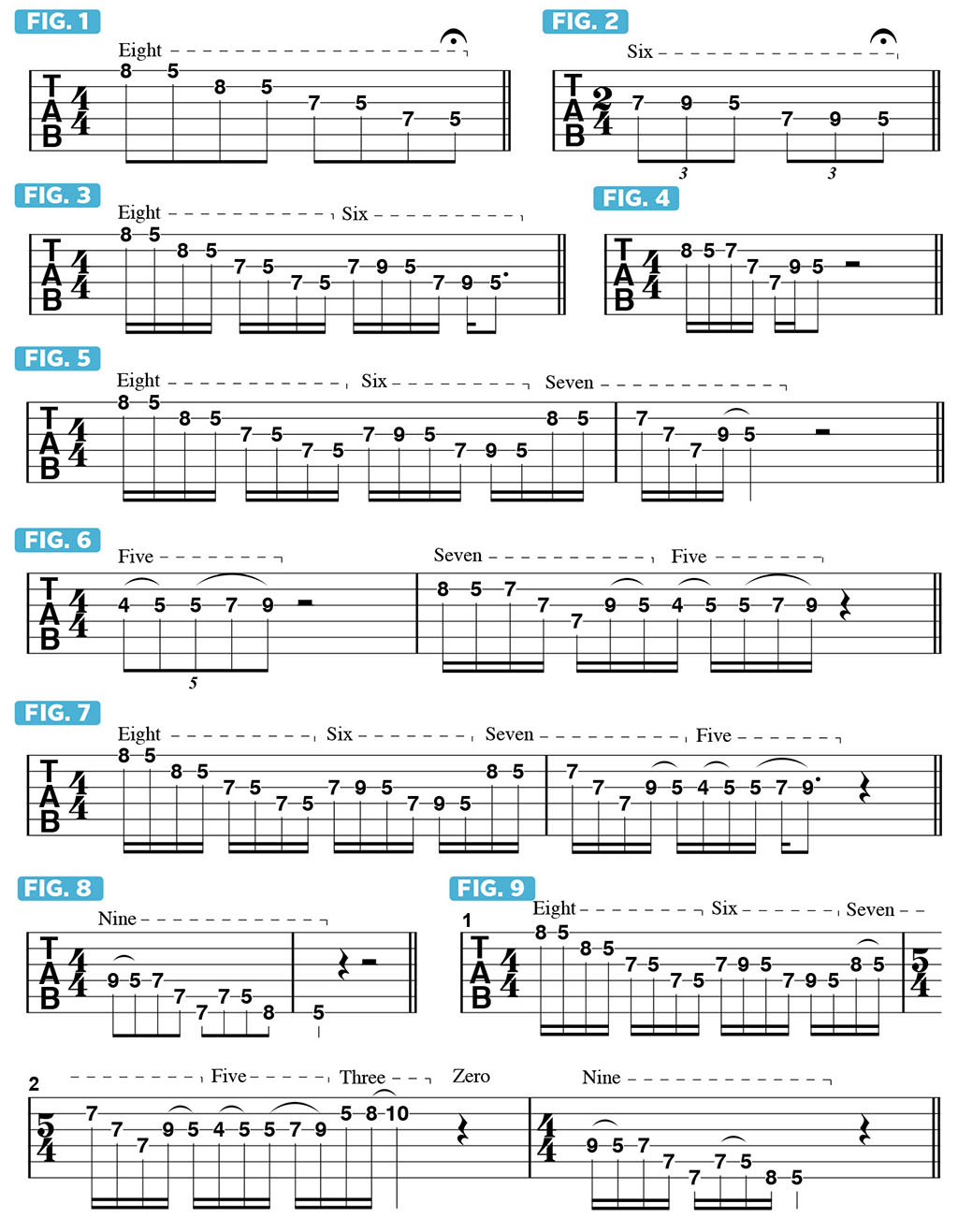Give your solos an unexpected twist by using math to craft musical phrases
Utilizing number sequences to approach songwriting will yield unusual results, as Dweezil Zappa explains...
In this lesson, I’d like to continue talking about numbers and sequencing approaches in regard to creating improvised lines. It’s not math rock per se, but rather normal guitar playing with an approach that allows one to explore phrases that can move decisively away from scalar-type lines, wherein you can utilize more interesting and unexpected rhythms that will surprise you, your friends and anyone who listens to your music.
A very easy way to dive into this concept is to select a series of numbers, and each collection of notes will be made up of those sequential numbers. For example, you can use a phone number as the basis for structuring a series of melodic phrases. If the first number is 5, the first phrase will be five notes long; if the second number is 8, the next phrase will be eight notes, and so forth.
Let’s use a phone number everyone is familiar with: 867-5309, which comes from the title of Tommy Tutone's huge hit song from the Eighties, 867-5309/Jenny. So the first musical phrase is eight notes, followed by a six-note phrase, then a seven-note phrase. Obviously, the note choices and melodic possibilities are endless.
FIGURE 1 illustrates a simple eight-note phrase built from the notes of the A minor pentatonic scale (A, C, D, E, G), played in descending order (G, E, D, C, A), with two notes per string. FIGURE 2 is a six-note phrase, wherein we have two three-note groups, played three notes per string. If we combine these two sequences and play them as straight 16th notes, we get the melody shown in FIGURE 3.
Next is a seven-note sequence, as shown in FIGURE 4. Note that in the middle of this phrase, I barre my ring finger across the B, G and D strings at the 7th fret and use an upstroke to pick those three notes. FIGURE 5 combines our eight-, six- and seven-note phrases into one longer one.
Okay, now we need a five-note sequence. To shake things up, let’s play all five notes on one string. In this way, we are creating a variety in the manner by which the notes are executed. In FIGURE 6, I use a pair of hammer-on phrases to create the five-note pattern. In bar 2, I combine the previous seven-note phrase with our new five-note one. FIGURE 7 combines all of the melodies into one long phrase.
For the 3 (not shown), I play E - G - A on the B string. The next number is the hardest one of all - 0. That means you have to stop playing, which for many of us is, um, difficult. The zero can last as long as you like. We’ll use a quarter-note rest.
All the latest guitar news, interviews, lessons, reviews, deals and more, direct to your inbox!
The zero is followed by a nine-note phrase, as shown in FIGURE 8. Now we have our entire phone number represented as a series of melodic phrases, presented in FIGURE 9.
Now that you have the idea, try using things like your license plate number (convert a letter to the appropriate number), your date of birth, or the serial number of your favorite guitar. This approach is sure to yield totally unexpected results.
Dweezil Zappa is a brilliant guitarist and son of the legendary Frank Zappa. For the last 12 years he has toured the world performing his father’s music with Zappa Plays Zappa and other ensembles. His latest album is Confessions of a Deprived Youth (Deep Fried Youth).


